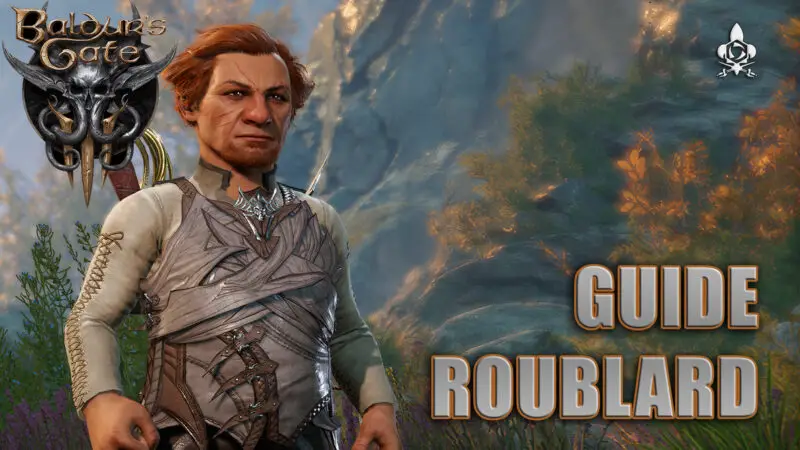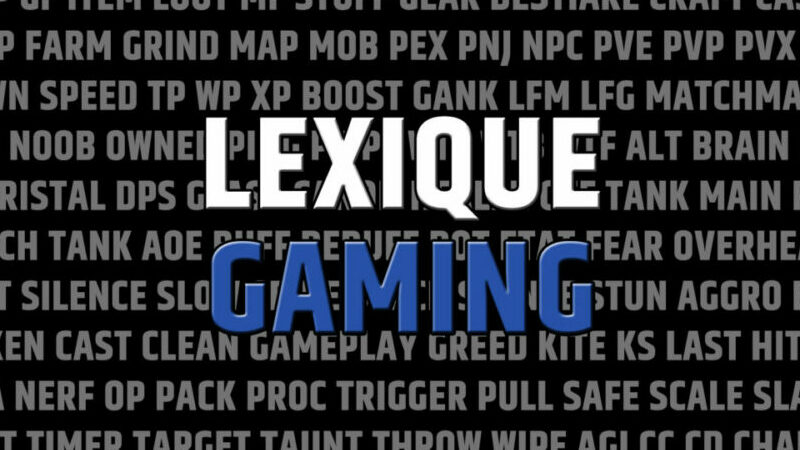
Rogue BG3: you will know all about what makes the power of this class and how to optimize it to run on the game!
The Rogue is a melee fighter who has a great potential for single-target damage, but who is quite fragile due to his low health and low armor; You'll need good placement to get the most out of its sneak attacks, which are at the heart of its gameplay.
The rogue can currently specialize in early in only 2 archetypes: Either become Voleur, either become Arcane crook. Depending on which archetype you want to play, the choices when creating your character will be a bit different.
Sneak attack, how does it work
Sneak attack is an ability that is available once per turn; Melee or from a distance.
Here are the conditions for the Backstab to be effective:
- Whenever you have a advantage to attack roll, you deal Backstab damage.
- You also deal Backstab damage if an ally is adjacent to the creature that you attack.
- However, you never deal Sneak Attack damage if you have a disadvantage to an attack roll.
Advantage Disadvantage
Normally, when you make an attack, ability, or saving throw, you roll 1 dice with 20 faces. But in certain situations you gain the advantage or the disadvantage: You then throw 2 dice to 20 heads (d20) at the link of one, and use the higher score if you have an advantage, or the lower if you have a disadvantage.
This doesn't just apply to sneak attacks or the rogue. This is a rule of thumb for everyone, including your enemies.
In what situation does the benefit apply?
- To be overhanging or to be invisible.
- Attacking an enemy: behind the back, on the ground, blinded, hampered, stunned, unconscious, paralyzed, petrified.
Rogue Weapons
Finesse weapons are weapons that use the highest modifier between strength and dexterity and are essential for the rogue.
| Poor | Damage | Properties |
| Dagger | 1d4 piercing | Finesse, light, throw |
| Short sword | 1d6 piercing | Finesse, light |
| Rapier | 1d8 piercing | Finesse |
Among these, the short sword being light, you can equip one in each hand.
When you gain characteristic points, you will be able to choose a feat instead of increasing a characteristic.
The gift Two-weapon fighter will allow you to use non-light weapons, you can then equip yourself with 2 rapiers. By doing this, the modifier cannot go up to +4 and therefore remains at +3:
Thief while fighting with 2 weapons: (1D8 + 3) * 3 attacks = 12 to 33 damage in 1 turn.
But in the current state of the early this gift is not yet profitable.
The rogue having great dexterity, he will also be very skilled with bows and crossbows. Which makes him a very versatile character.
Armor
The rogue can only wear light armor which has a maximum AC of 12, but which takes into account the totality of the dexterity modifier. Which implies 12 + 4 = 16 for this early blocked level 4… which is very low for a CAC.
You can go up to 19 by taking the "moderately protected" feat at level 4, by equipping yourself with a +1 scale armor ou githyanki armor and taking a shield. But then you lose damage potential on bonus attacks. This can be interesting if you play more ranged than melee (or arcane crook).
The role of the rogue
Thief is currently the biggest damage dealer in the game because Larian did not follow the rules of D & D5 well. Indeed, this one can give up to 3 attacks per turn, to which are added various bonuses: the bonus of sneak attack, the bonus of the modifier and a possible bonus of poison. In return for being the best damage dealer, the thief is fragile. He has a very low armor class for a CAC (melee) and will therefore have to show a very good placement to compensate.
The Arcane Swindler does not have as high a damage potential as the thief. But his spells allow him to more easily have the advantage over his enemies and thus perform sneak attacks. He is a little less dependent on his placement. The objective of the spells, here, is not to make damage, because the damage rests on your slyness, but to have support (which does not require intelligence to succeed). So you won't need to spend intelligence points. Spells such as aiming aid, dancing color, fog, blind enemies, giving you the advantage. Sleep is also very effective, since any CAC attack that hits an unconscious creature is a critical hit.
The Arcane Swindler may also be more suitable if you want to play more from a distance because in this setup you will often only need one bonus action, that of hiding. Spells will therefore give you more versatility in this role.
Why the biggest DPS in the game?
The Thief wins light hands at level 3. This gives him the advantage of being able to perform an additional bonus attack in the left hand. And therefore 3 attacks in 1 turn if it is equipped with 2 short swords. He is the only one who can do that. (1 right hand "action" attack + modifier) + (left hand "bonus action" attack + modifier) + ("light hands bonus action" attack + modifier) and you can add to this + 1D6 sneaky.
For the moment we are blocked lvl 4 so the dex modifier is at +4 max, which gives:
Double Blade Thief: (1D6 + 4) * 3 = [15, 30] damage in 1 turn (+ 1D6 devious) + (and I'm not talking about the damage distribution advantage ...)
Double Blade Warrior: (1D6 + 4) * 2 = [10, 20] damage in 1 turn.
2-handed weapon warrior: (2D6 + 4) = [6, 16] damage in 1 turn.
Realize that his minimum damage is practically equal to the maximum of the 2-handed warrior! It is understood that the 3 attacks obviously hit, so it will be necessary to position yourself well behind the enemies to maximize their chances of hitting because in BG3 the left hand suffers a penalty on the attack roll.
The poison: the rudimentary poison does 1D4 damage and acts for 3 turns on a weapon coated with it. Since the Thief is the only one with 3 attacks, he benefits from 3 attacks * 3 turns of poison = 9D4 of poison. Against 2 * 3 = 6D4 poison for another 2-weapon fighter.
Of course, all this is theory, we speak of "damage potential", because in practice, the bonus actions will often be used to drink a potion, jump to better position yourself and the penalty to the left hand attack roll does that. 'we often miss. So position yourself well behind or overhanging to maximize the chances of hitting.
skills
There are only 2 skills that are really useful for optimization:
- Perception: which will allow you to detect hidden enemies during a fight and to detect traps.
- Athletics: which has an influence on the jumps.
(and maybe acrobatics to avoid slipping on a patch of ice but this should be checked)
Origin
Attention do not take an origin giving discretion if you are Wood elf ou Lightfoot Halfling because these races already give discretion. It would be a shame to lose a skill by accumulating it twice. In the same way, do not take an origin giving perception if you are Elf.
- Street kid: concealment + discretion
- Sailor: Athletics + perception
- Criminal: deception + discretion
- Sauvageon: athletics + survival
- Soldier: athletics + intimidation
- Charlatan: deception + evasion
- Artist: acrobatics + representation
Race
Rogue needs dexterity, so we favor races with +2 dexterity.
The Rogue also requires wisdom to perceive the traps. This is not mandatory, unless you want to try the adventure in lone wolf, because no companion will then be able to detect the traps for you.
Be careful, however, if you want to cast offensive spells (unlike the support ones mentioned above), the arcane crook will need intelligence.
| Voleur | Arcane Rogue |
| Wood elf Dex +2 Wis + 1 Improved displacement: 10,5m Vision in the dark. Discretion + perception = 2 skills appreciated by a rogue. Immunity to magical sleep which is also very strong. |
High Elf Dex +2 Int + 1 Vision in the dark. Perception that is valued Immunity to magical sleep which is also very strong. |
| Valiantheart Halfling Dex +2 Cons + 1 Restricted displacement: 7,5m Poison resistance and especially Fortunate which is very beneficial because you will have very little chance of making a critical failure! |
Wood Elf (Thief)
- for 12
- x 17
- cons 15
- int 8
- right 14
- tank 8
Level 4 put 1 point in Cons and 1 point in Dex to find even numbers in order to increase your modifiers to the next higher value.
Valiantheart Halfling (thief)
- for 10
- x 17
- cons 16
- int 8
- right 14
- tank 8
If you are aiming for the long term constitution +2. but as the early blocks us level 4, the most important is Dex + 1, afterwards to you to see, cons + 1 does not give a bonus to the modifier but it is what still seems the most consistent.
High Elf (Arcane Rogue)
- for 8> 12
- x 17
- cons 15
- int 14> 16
- sag 8> 10
- tank 8
displacement
the thief is also the only one who can accumulate 2 accelerations: Normal action acceleration + bonus action acceleration:
Halfling Thief Test
- Basic 8m => (running action + 7m) 15m => + (running action bonus + 8m) 23m
Test on Astarion
- Basic 9m => (running action + 9m) 18m => + (running action bonus + 9m) 27m
With so much speed if you run away from a fight no enemy will be able to catch you, which is appreciable in lone wolf.

An ultra detailed guide to really know everything about the rogue of Baldur's Gate 3!
By Luckywi, November 2020








